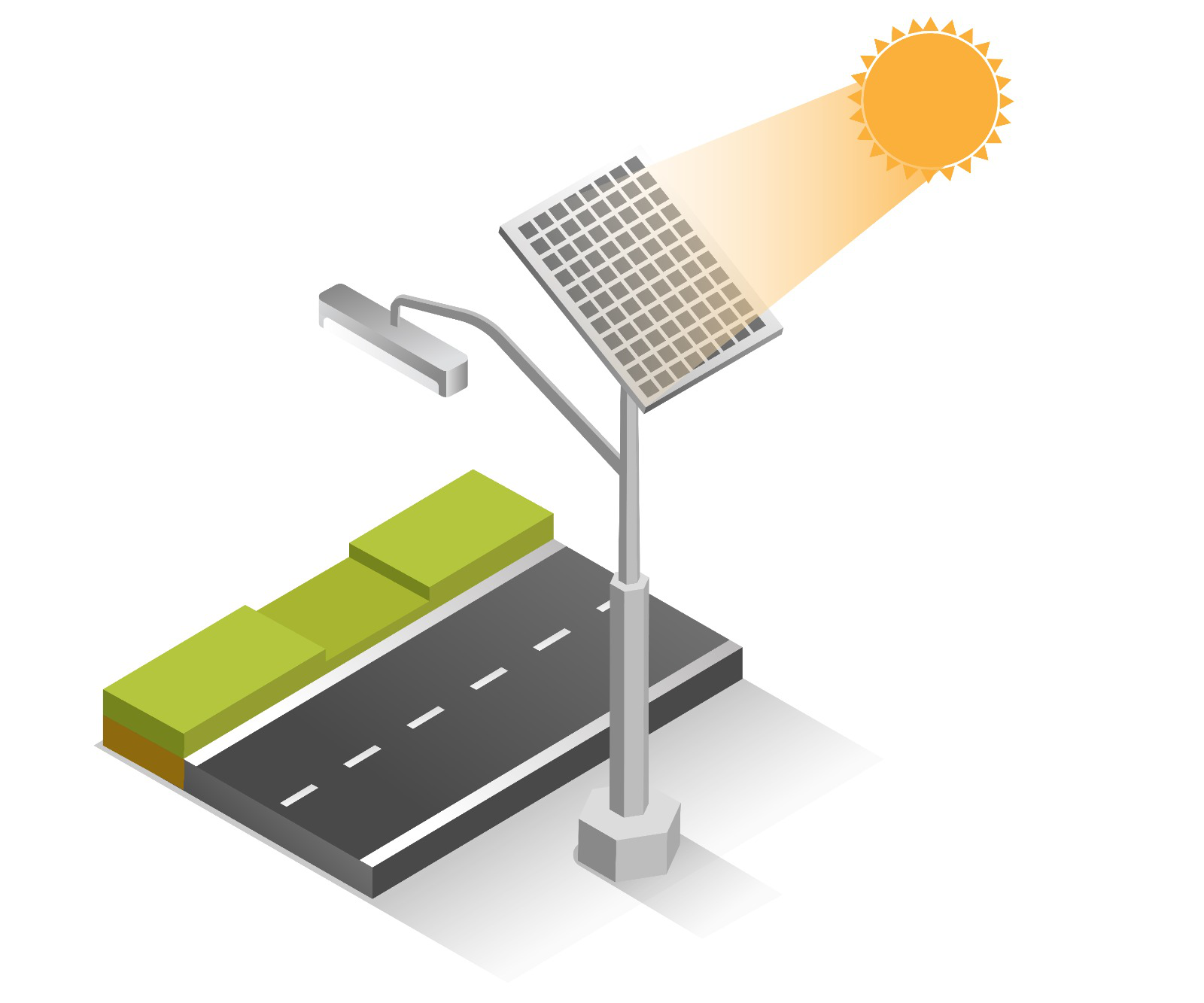solar street lights work on the principle of photovoltaic effect. When placed under direct sunlight, solar cells on the panels absorb sunlight and convert solar energy into usable electrical current.
This direct current is stored in solar batteries through a charge controller.
This energy is used to illuminate solar street lights from dusk till dawn. The current generated by a solar panel depends on the size of the solar cells and the amount of sunlight absorbed by the panel.

A solar cell consists of layers of negatively-charged electrons and positively charged spaces. When sunlight passes through these solar cells, the electrons are activated and pushed into the positive spaces. This forms an electrical circuit and when the electrons pass through this circuit, direct current electricity is generated. A solar cell is made of a semiconductor material called crystalline silicone and a solar panel is composed of multiple solar cells.
The solar panel is connected to the battery through a charge controller. The role of charge controllers is to protect the battery by regulating the voltage and preventing the backflow of current through the solar cell at night when the charging does not happen. The solar-to-current conversion process stops at night and solar cells stop producing power at nightfall. Photoreceptors on the solar lamp sense the lack of sunlight and start supplying power that is stored in the battery to the light source. Again, at daybreak, the photoreceptors shut off the light automatically.

